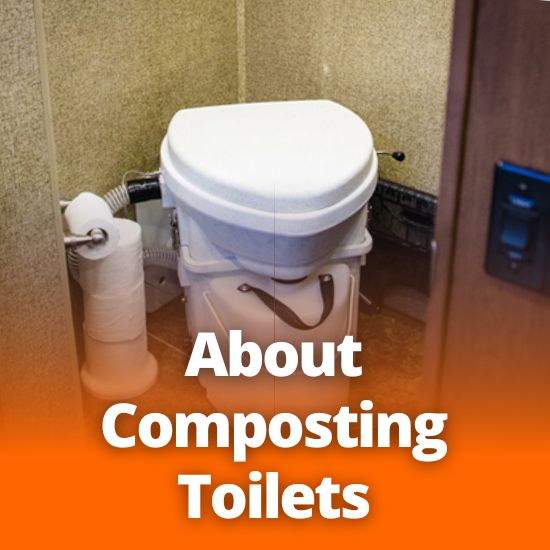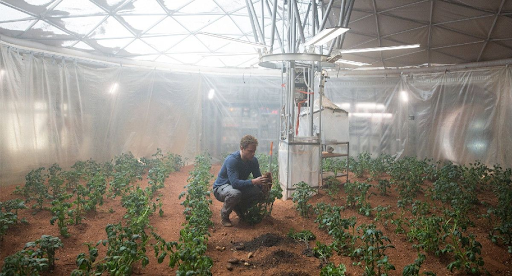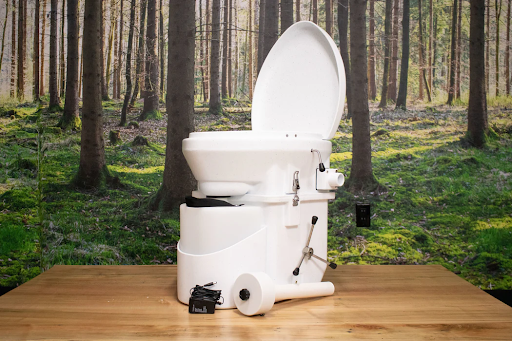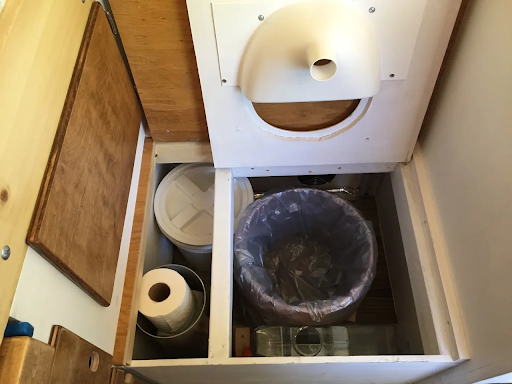
About Composting Toilets
The standard RV toilet essentially drops your business directly down into the black tank, but there are a couple different options out in the world not just for RVs, but micro-houses and off-grid living. Today we’re going to go through the good and the bad of composting toilets.
Now, what is a composting toilet? To be brief, it’s a toilet that composts waste rather than flushing it, and therefore does not require the use of water or plumbing. The resulting compost turns into fertilizer that can be tossed in the trash or compost pile.

Now, if you watched The Martian (2015), (or read the stellar novel), you’ll have an idea about how human waste can be recycled into nutrient rich soil. But here’s a quick science refresh:
Compost is a mixture of decayed matter used for fertilising and conditioning land. It comes from the process of recycling organic matter in a way that speeds up the process of decay by providing an ideal environment for bacteria, fungi, and other organisms that aid in decomposition (such as worms). Done right, you end up with “fertile garden soil.”
Composting done wrong can lead you to a mix that’s slimy, stinky, and wet. However, according to gardening experts, this can be fixed by balancing nitrogen-rich material (too much = ew) with carbon-rich material (too much of this makes the mix drier and takes longer to break down). You need a good balance of nitrogen and carbon-rich materials for the ideal composting mix.
But enough about decay science, we’re talking toilets.
How Does It Work?

There are a few variants of composting toilets, some that drop liquid waste into your grey tank, to permanent off-grid cabin designs where it’s sent into an underground pit (for lack of a better term). So we’re just going to cover the basics.
A composting toilet works by separating liquid (urine) waste from solid waste into their own compartments to be disposed of separately. The mixing of these wastes is what creates sewage and would disrupt the whole ‘composting’ concept. Using no water, solid waste is allowed to be decomposed by bacteria and enzymes, or otherwise disposed of – usually by the receptacle for that matter having a layer of sawdust.
Some have a macerating element that stirs the sawdust (or other compost starter such as dry peat moss or coco coir) and solids, meaning less time between emptying that side and lessening any smell further.
There will be a divider that ‘swishes’ liquid waste away, most users ‘rinse’ this element after every go with a few sprays of white vinegar diluted with water (and sometimes a few drops of tea tree oil).
Any used toilet paper can be dropped in the bucket with the solids, although many don’t recommend this as it takes up space and instead toss it in a garbage bin.

(Example of DIY set-up)
Most composting toilets you can purchase feature a vent tube and fan to pull odours directly from the bowl to outside your RV to prevent them leaving the bathroom (however, could that mean that the outside of your RV can smell like a port-a-potty? Unknown). DIYers we looked at have used 12-volt computer fans, with the bathroom located against an exterior wall, the fan is installed down by the solids bucket and works just the same.
Pros
- No dumping the black tank
- No black tank limits for off-grid RVing or boondocking
- Doesn’t use up fresh water/saves water
- Good for RVs with small tanks
- More eco-friendly
- Contains smells more than standard toilet
Cons
- Still have to pour out liquid waste almost daily
- Purchasing one is expensive
- You have to install the toilet in your RV/have it installed
- The odd shapes/designs of some models don’t work in all RV bathrooms
- If you always RV with hook-ups it isn’t an advantage
- Have to consider where the vent will go (i.e. not on the door side)
- Learning curve to properly using
Properly set-up and used, a composting toilet should contain or downright eliminate smells, making use of anaerobic bacteria and oxygen to break down waste into compost.
Anyone with a composting toilet, be it bought or made, say the only ‘bad’ smelling part is dealing with the urine bucket (should that be the collection method). However, one way of dealing with that is to plumb your composting toilet to a designated “yellow” tank, as some call it, that would allow for further capacity but would still have to be emptied at a traditional dump station. Otherwise, captured urine can be emptied into a traditional toilet.
Now, if you’re not going to go the Watney way and grow potatoes on Mars with your compost waste you can just dump your bucket into a trash bag (some pre-line those buckets with a heavy duty composting bag to make it easier) to toss out.
Solid waste can be dumped and composted outside if done correctly and on your own property. Don’t just go throwing your poop in someone else’s compost pile. Research proper handling of solid waste compost before doing this.
Why?
Harmful bacteria and pathogens can remain in your waste (same reason you shouldn’t throw animal faeces in your compost). These can remain in the compost and be absorbed by any edible plants grown. There are ways to eliminate these, but for the average compost heap it’s best to play it safe and not grow anything edible with human waste compost. Flower beds, trees, and the like are fair game though!
Who is a composting toilet best for?
Just like other RV or small living features, the composting toilet isn’t for all. It can be great for people who love boondocking, if you want to be more eco-friendly, and generally those who RV as a pair or solo.
It’s not going to be the best choice for families, as use by more than two people will end with you dumping both the liquid and solid waste bins more frequently. And if you already prefer to be hooked up to sewage as we mentioned before, this would be a rather pointless change for you.
But if you don’t mind some of those changes we mentioned above, and you really like being off-grid, the composting toilet can be a great swap for your RV life.